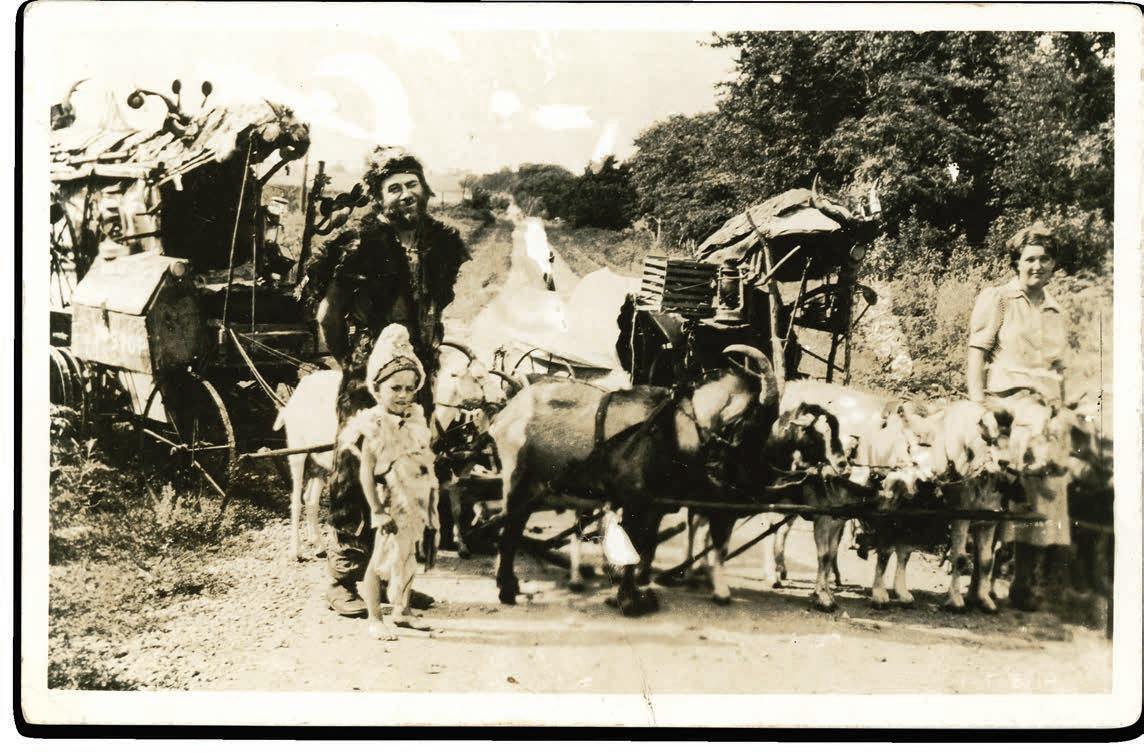
2 minute read
SSI Archives
Remembering the Goat Man
Many who lived in the South in the 1950s and 60s remember encountering Charles “Ches” McCartney, more commonly known as the “Goat Man.” McCartney became a folk legend as he travelled around the country with a small herd of goats and all his belongings heaped on a rickety wagon.
McCartney was born in Iowa in 1901 and worked as a farmer until the 1930s. After losing his farm during the Great Depression, he began working for the Works Progress Administration. In 1935, he was injured on the job when a falling tree pinned him down for many hours. After his near-death experience, he took to the road and became an itinerant preacher, travelling from town to town with 15-30 goats pulling his wagon or trailing along beside it. Crowds gathered on the outskirts of southern towns to hear him preach and share his philosophy of life. He was known to wear goatskin clothes and subsist on goat’s milk which, along with his habit of rarely bathing, earned him the nickname Goat Man. Such was his fame for religious fervor that he caught the attention of writer Flannery O’Connor, who lived in Milledgeville. He is mentioned in her letters and may have inspired a character in one of her novels.
To earn a living on the road, McCartney sold pots, pans, and picture postcards of his caravan. He was married three times and had several children. One of his wives was a Spanish knife thrower ten years his senior.
McCartney claimed to have travelled through every state except Hawaii. After being attacked and injured near Chattanooga in the late 1960s, he settled in Jeffersonville, Georgia, which had been headquarters of his Free Thinking Christian Mission for many years. He eventually sold or gave away his goats but continued to travel by foot and hitchhike. He died in a nursing home in Macon in November 1998. Though in his late nineties, he claimed to be well over 100.
Earlier this year, Chuck Horton, a former resident of Brunswick, donated the postcard shown here to the Society. He has vivid childhood memories of the Goat Man’s visits to Glynn County. His father took him to see McCartney in the vicinity of Dock Junction, and Horton remembers, “I was in awe of the sight of so many goats and all the paraphernalia on the Goat Man’s wagon. Crowds of people gathered to see him. He was an unforgettable character.”
Coastal Georgia Historical Society presents this article and images from our archives as part of our mission to tell Coastal Georgia’s inspiring stories. The Society operates the iconic St. Simons Lighthouse Museum and the World War II Home Front Museum, housed in the Historic Coast Guard Station at East Beach. To learn more about the Society, its museums, diverse programs, and membership, please visit coastalgeorgiahistory.org.









